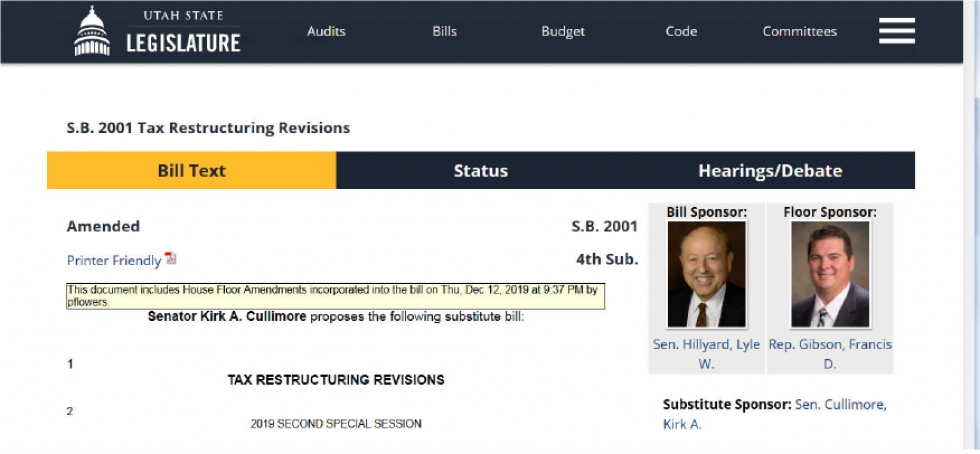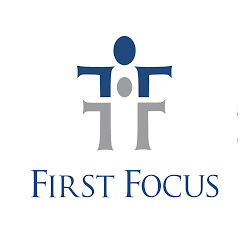Last night, December 12, 2019, the Utah Legislature passed a tax restructuring package in a special legislative session.
Voices for Utah Children was very involved in this process over the course of the year. We attended the Tax Restructuring and Equalization Task Force (TRETF) hearings, generated public comment, released our position paper in September, and later that month participated in a poverty advocates' coalition letter signed by 27 non-profits that work with and advocate for lower-income Utahns. We published two op-eds on September 14 and November 26 as well as numerous blog and Facebook posts and tweets. We also worked directly with Task Force members to evaluate and shape the Task Force proposals.
From the start, we focused on two questions:
- Does the tax proposal reduce the regressivity in Utah's tax system so that we are taxing fewer Utah families into - or deeper into - poverty? Currently, Utah's overall tax system is regressive, in the sense that lower- and middle-income Utahns pay a higher overall tax rate than upper-income Utahns.
- Does the tax proposal enable Utah to invest more in the long run in Utah's children -- their education, their health, their future prospects to become productive members of their communities and of our state? The State Tax Commission and the Utah Foundation have both published research this year documenting that our overall level of taxation stands at a multi-decade low, raising the question of whether the current generation of Utahns is doing our part, as earlier generations did, to set aside sufficient resources every year to invest in our children. As the poverty advocates' coalition letter detailed, our decades of tax cutting have left Utah with billions of dollars in urgent unmet needs in numerous areas.
So how did the final bill passed last night stack up according to these criteria?
Will it reduce regressivity?
While the idea of bringing back the full sales tax on food was not a part of our proposals, and in fact we proposed eliminating the sales tax on food entirely, our analysis of the near-final version of the bill found that, overall, it will reduce the impact of Utah's taxes for lower-income Utahns from 7.5% of their incomes to 7%, or by about $100 per year, IF they file for the new Grocery Tax Credit (GTC).
The Legislature’s analysts estimate that 30,000-50,000 low-income Utah households do not file taxes every year, because their incomes fall below the mandatory minimum. Thus, in order to maximize the number of households who file for the credit, Voices for Utah Children proposed, fought hard for, and, on the final day, won inclusion in the package of $500,000 to market the new tax credit to its target population. We also recommended that the bill be amended to add an automatic inflation adjustment for the GTC so that it would not lose its value over time, but that was not included in the bill.
Grocery Tax Credits have considerable drawbacks (mainly that they require the filing of paperwork to obtain them) and vary greatly among the half-dozen states that have them. But the one passed last night will likely be the most generous and accessible one in the nation for lower-income households, based on the amount of the credit, its eligibility rules, and the commitment to invest substantial resources to publicize it.
The bill also makes Utah the 30th state with our own Earned Income Tax Credit (EITC), amounting to 10% of the federal credit and fully refundable, aimed at the 25,000 working families in Utah's intergenerational poverty (IGP) cohort. The inclusion of this provision – which was pulled from the bill for several very tense hours Thursday afternoon – is a credit to the persistence of Rep. Robert Spendlove, the sponsor of HB 103, chair of the House Revenue and Taxation Committee, and member of the TRETF. This is something that many Utahns have sought for decades, and Voices for Utah Children is grateful to the dozens of partnering organizations that have advocated for it alongside us in recent years.
Will it invest more in children?
Unfortunately, the answer here is no. The Governor and Legislature gave in to the election-year temptation to boast about a big tax cut. The bill reduces income taxes by over $600 million and replaces less than $500 million of that revenue with new sales taxes, leaving the state with $160 million less revenue every year going forward to invest in Utah's children.
Voices for Utah Children had strongly advised against using the state's current temporary fiscal surplus to permanently reduce revenues. We see this as a missed opportunity to act now for the state's long-term future, especially given that the shift from income taxes to sales taxes brings in tens of millions of new dollars from non-Utahns, which would have made it possible to offer an in-state tax cut while enhancing revenues or at least holding them steady.
Moreover, the shift from the faster-growing income tax to the slower-growing gas and grocery sales tax raises the question of whether public revenues will keep up with our fast-growing economy and population in the years to come, a point noted by Rep. Tim Quinn at the final TRETF meeting this past Monday. On the positive side, the bill does expand the sales tax base to some services and closes some outdated sales tax exemptions, which are small but important steps in the right direction.
It is also noteworthy that, because of the income tax rate reduction from 4.95% to 4.66%, about half of the overall net in-state tax cut of about $200 million annually goes to the top quintile of Utahns, those making over about $120,000 per year, and most of that half goes to the top 1% of Utah households, those earning over about $590,000.
As detailed in the poverty advocates’ coalition letter, our state suffers from chronic revenue shortages in numerous areas due to our decades of tax cutting, and these shortages disproportionately impact lower-income households. They also keep Utah from getting out ahead of our next-generation challenges, such as closing the majority-minority gaps that are worsening over time, even as our non-white communities are growing and becoming a more integral part of every region of Utah.
Thus, it is clear that a major challenge remains before Voices for Utah Children and other advocates in the years to come to make the case to the public and policymakers that it is worth investing more in our children, not less.






